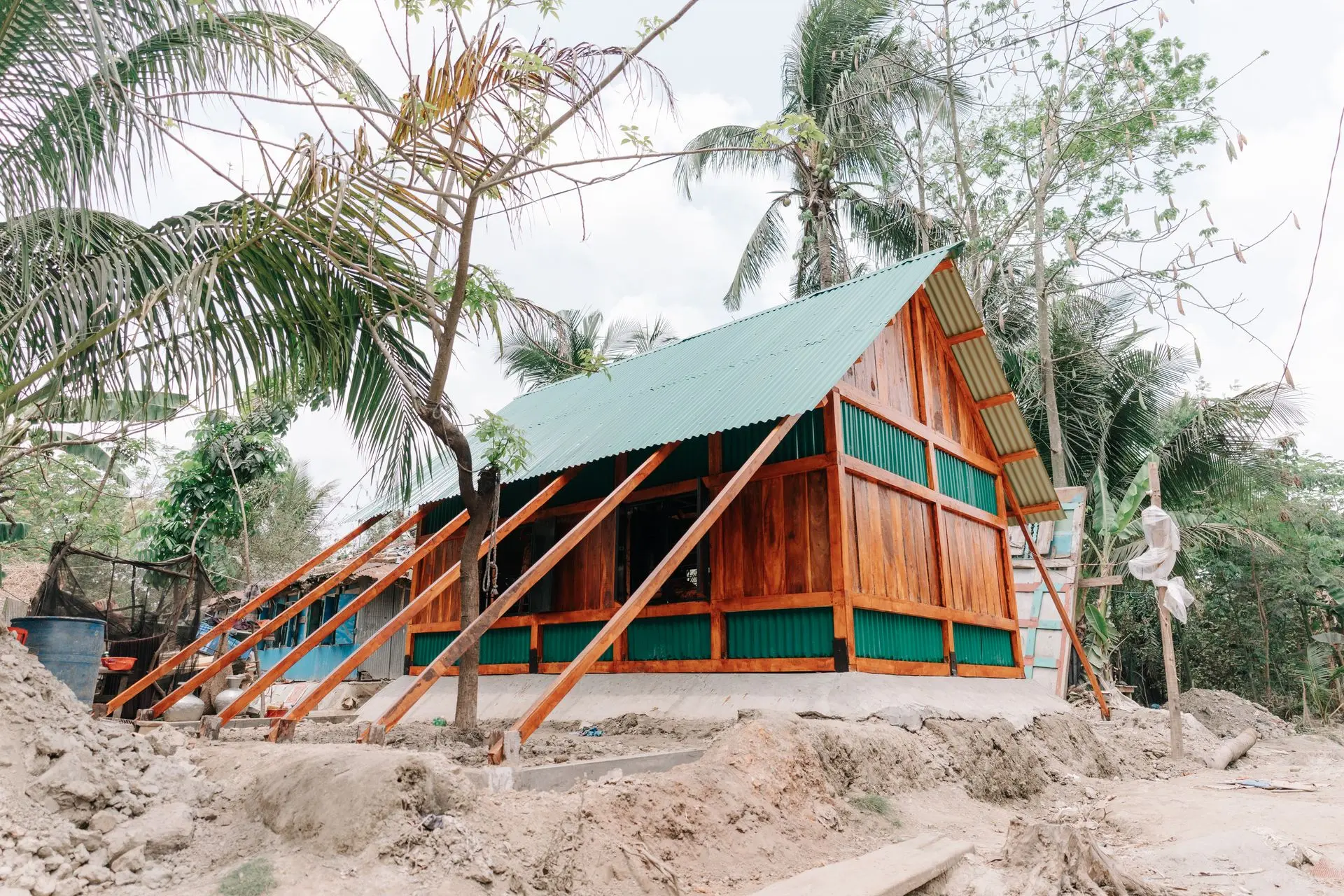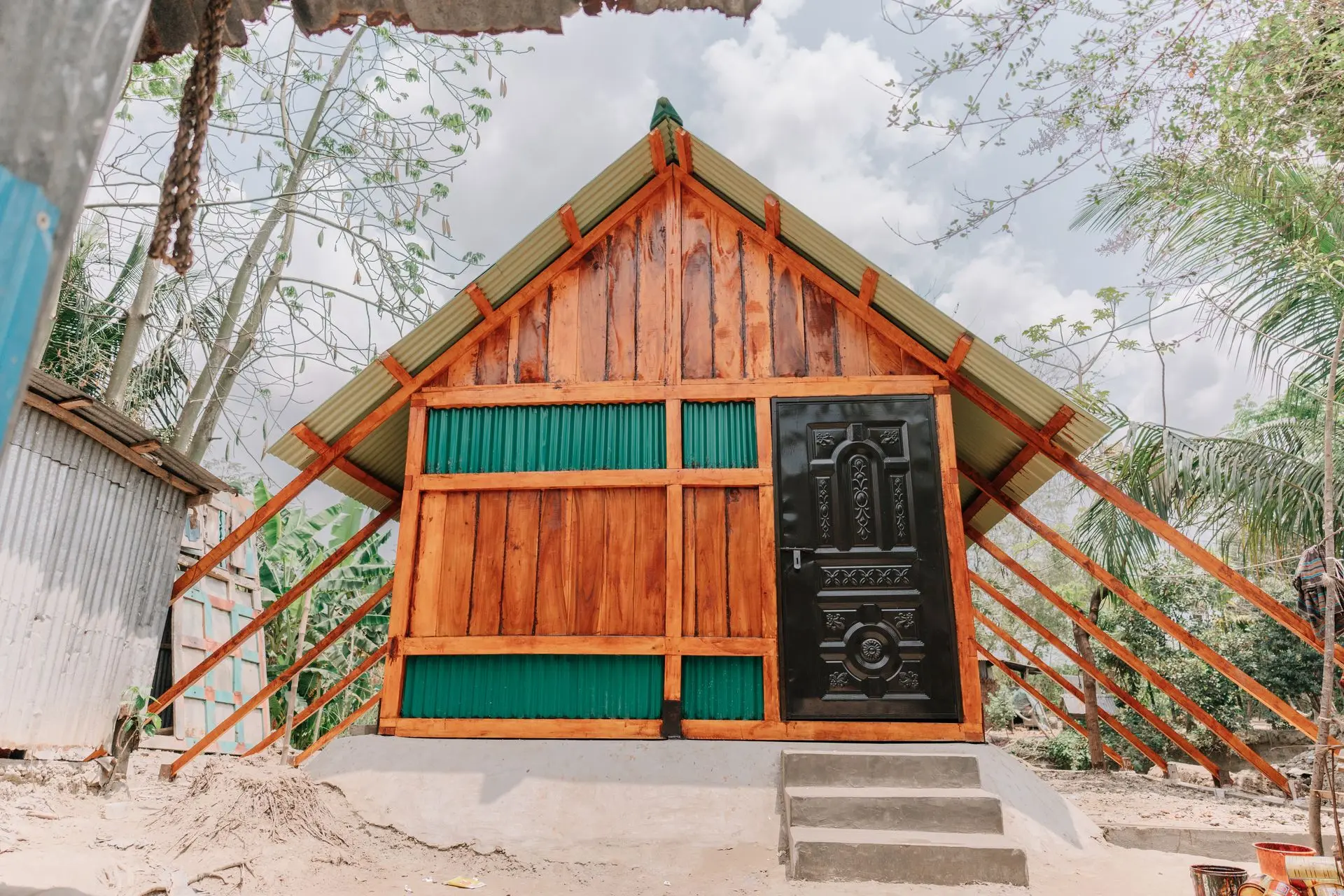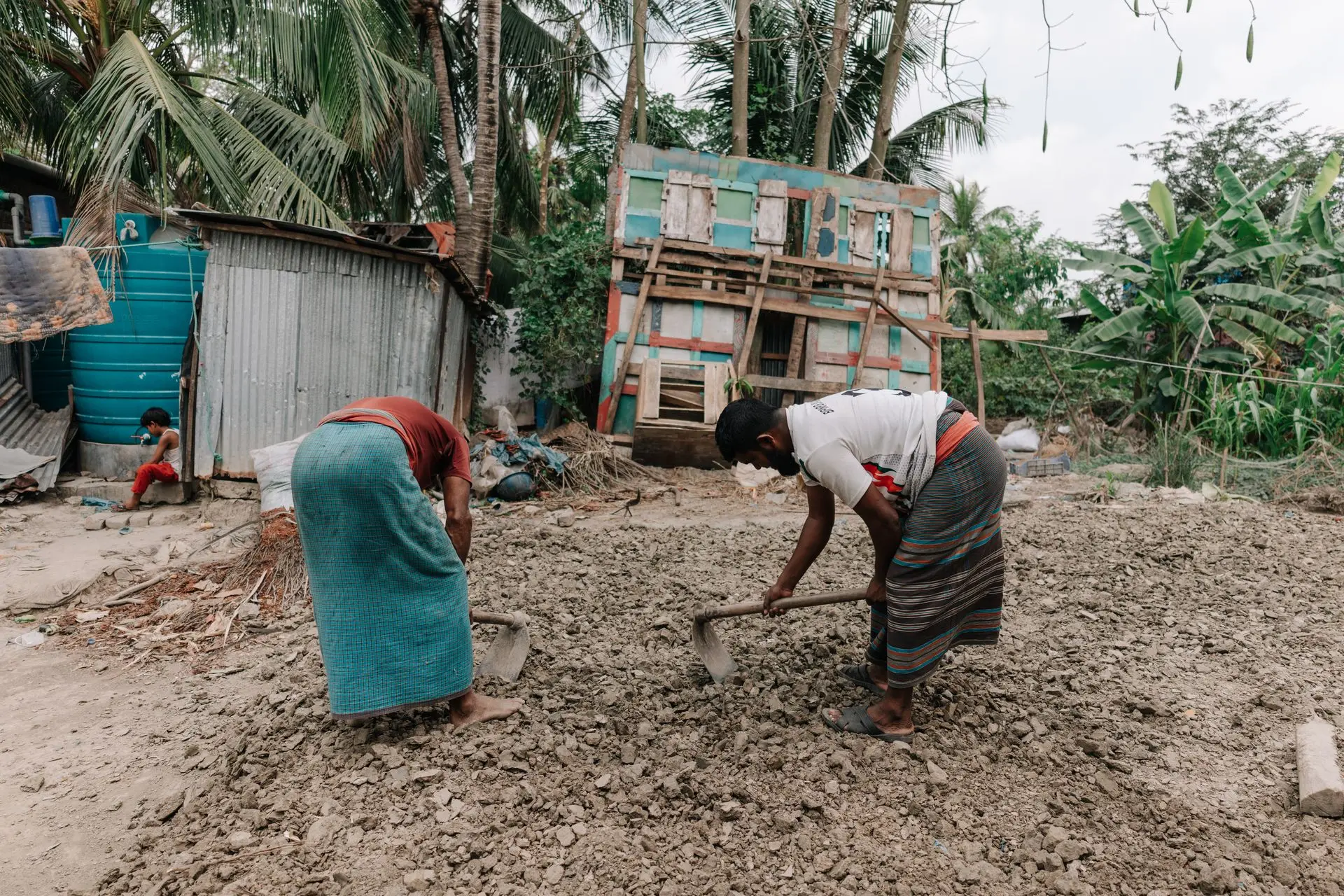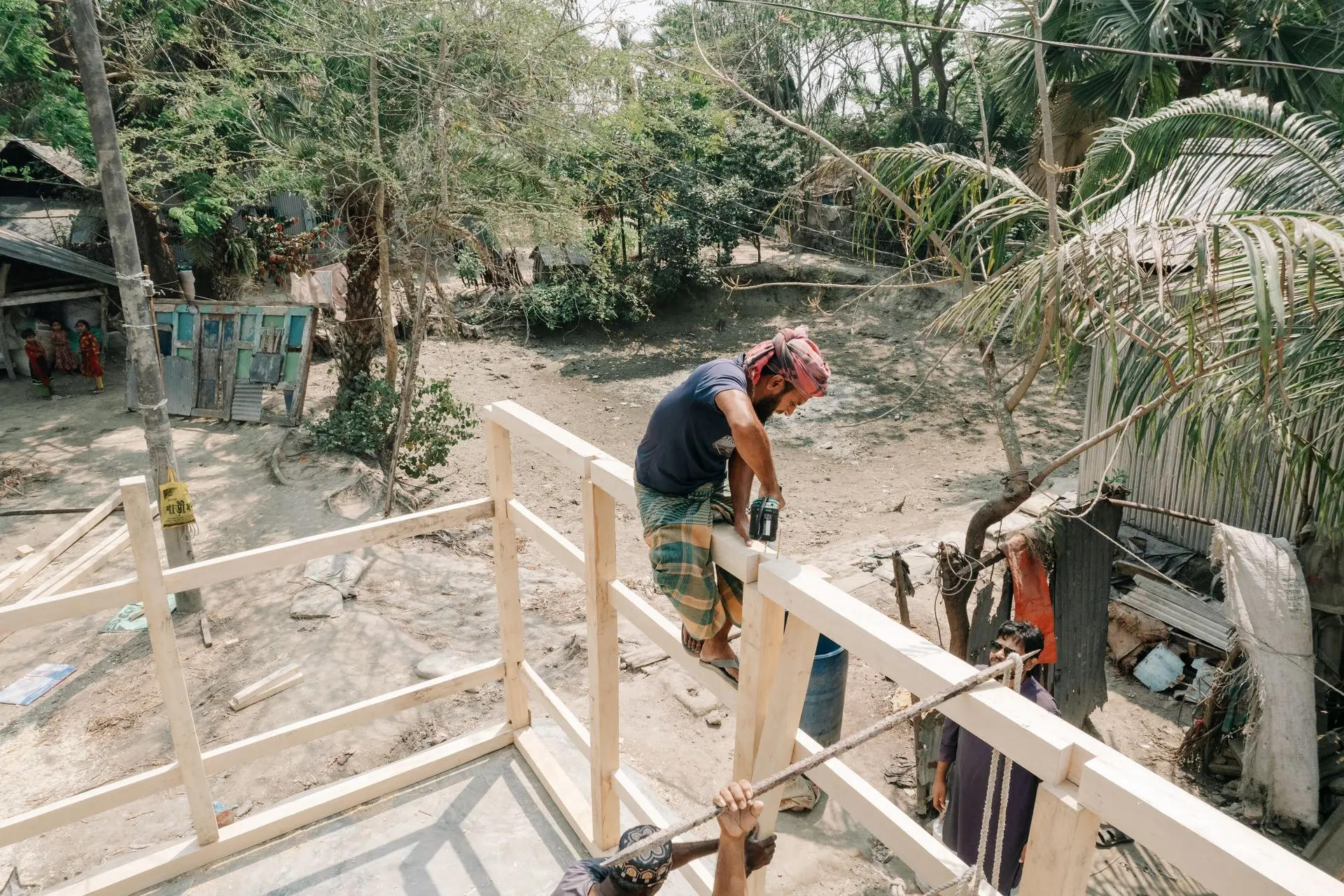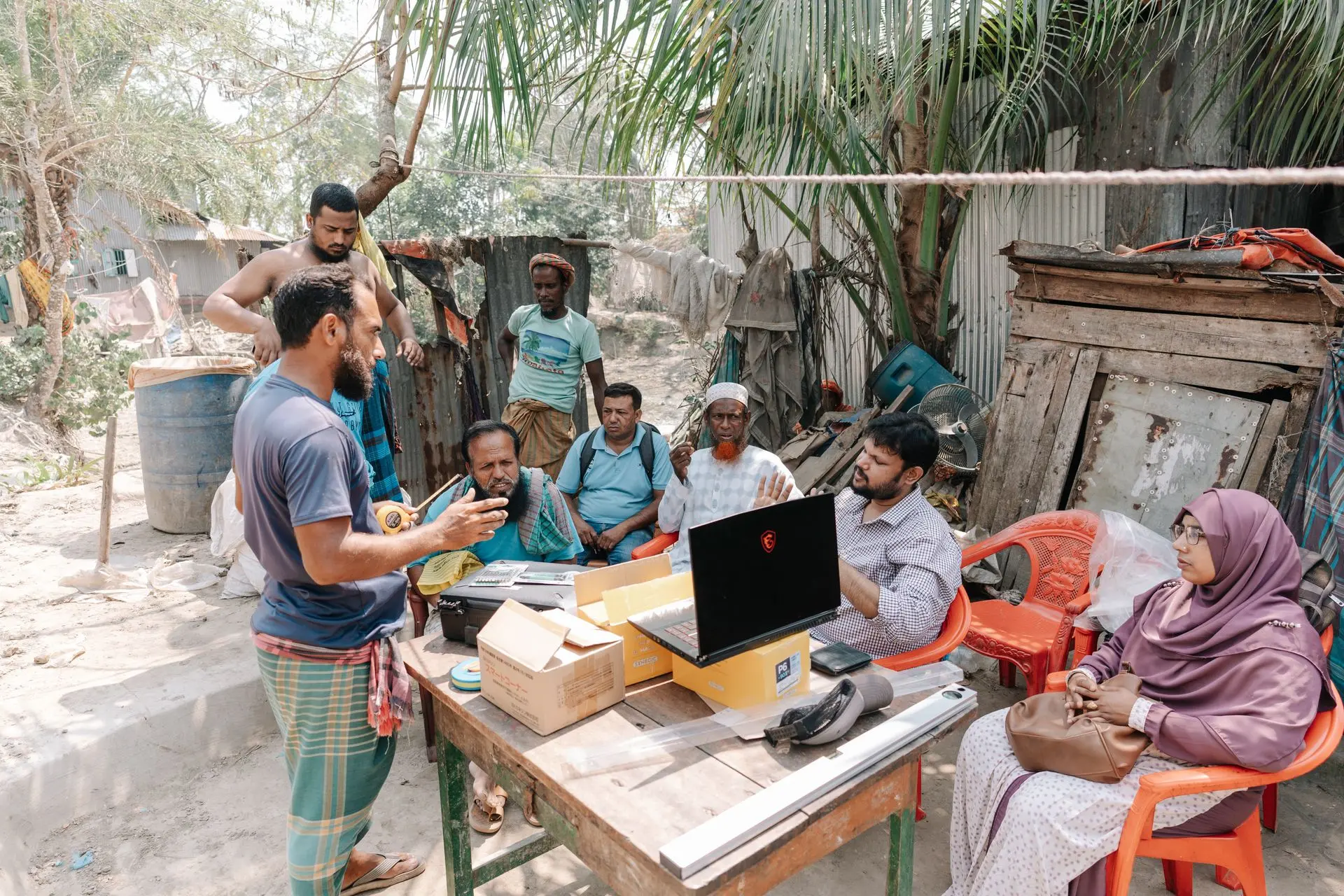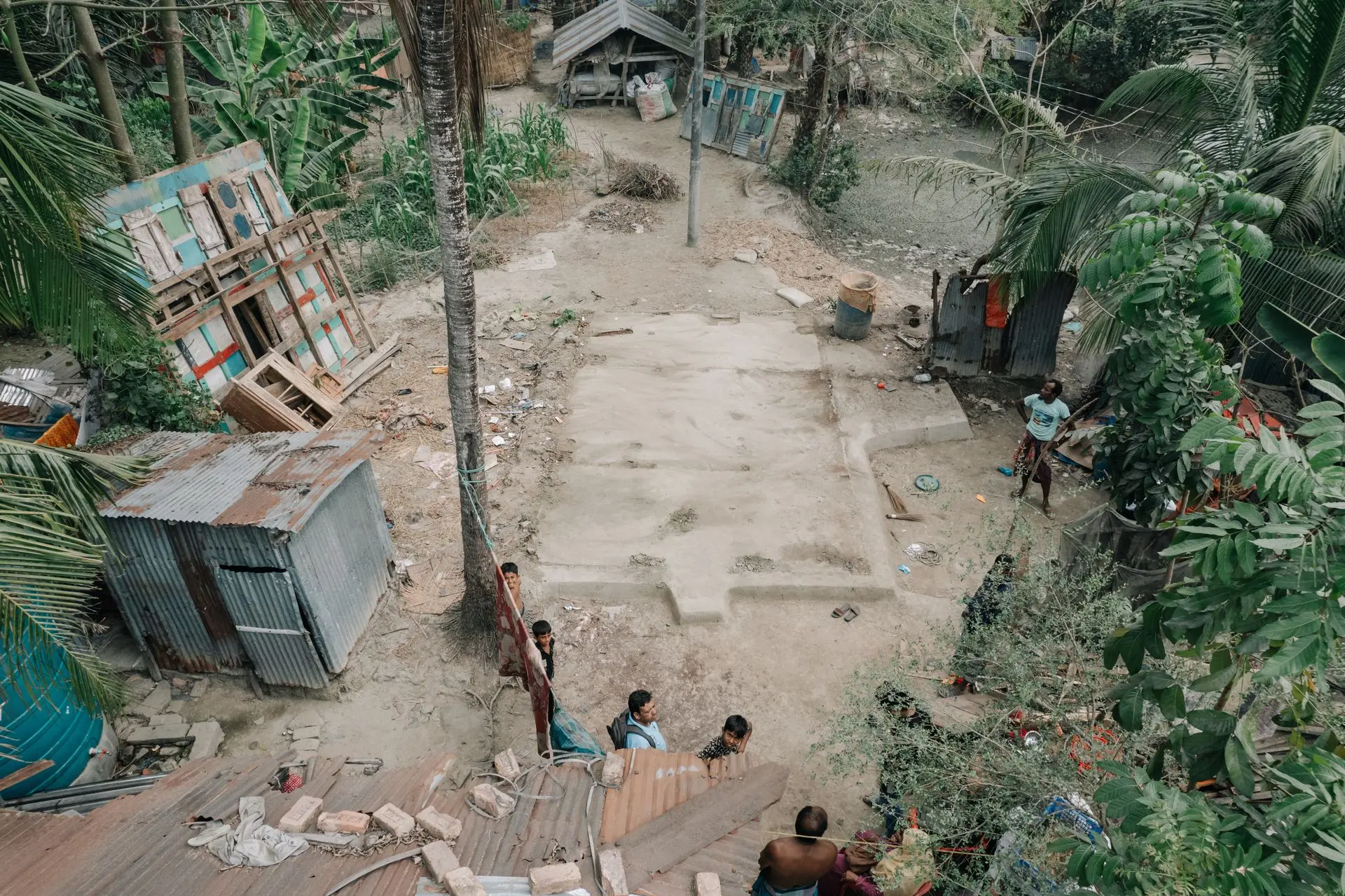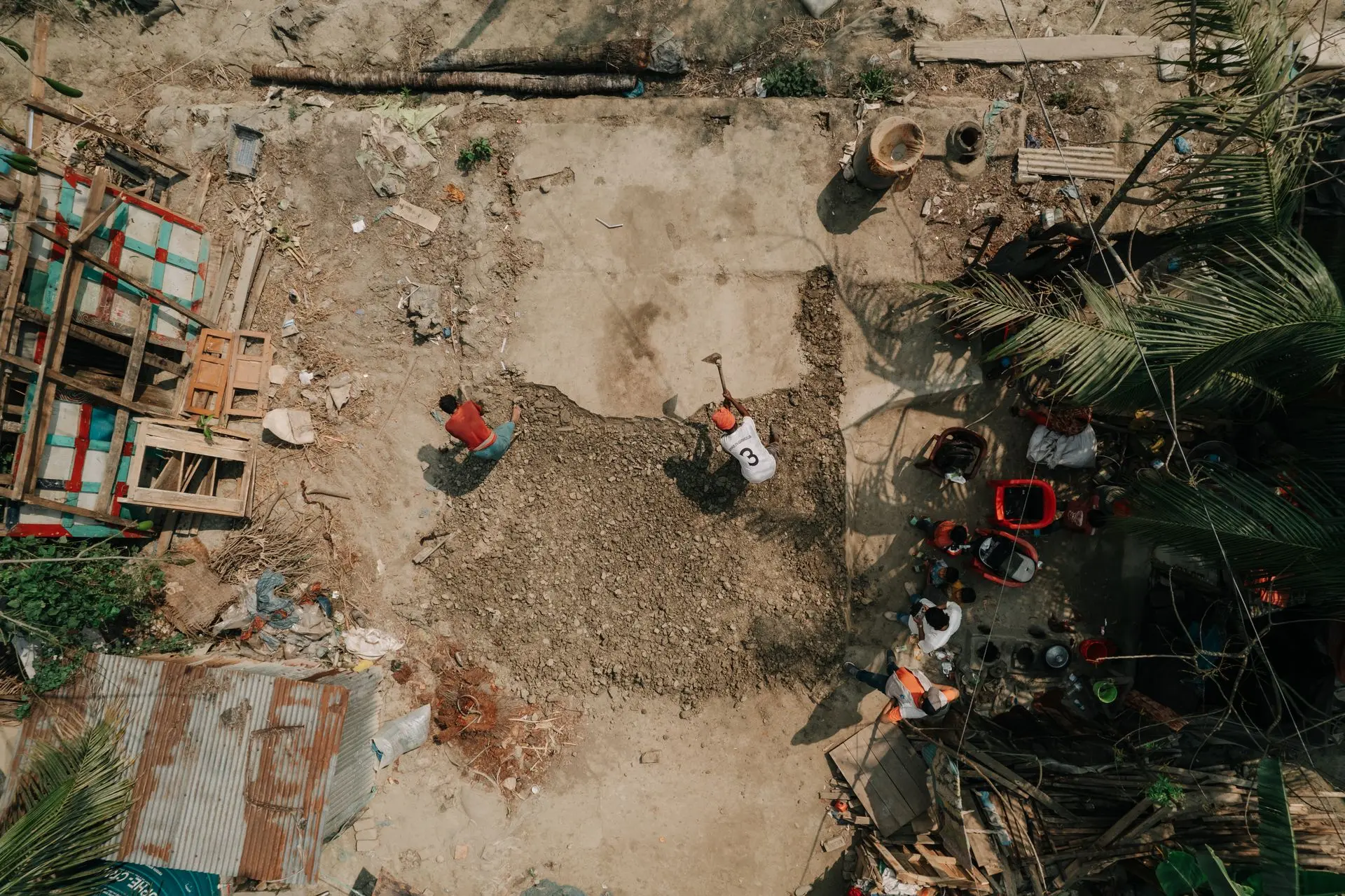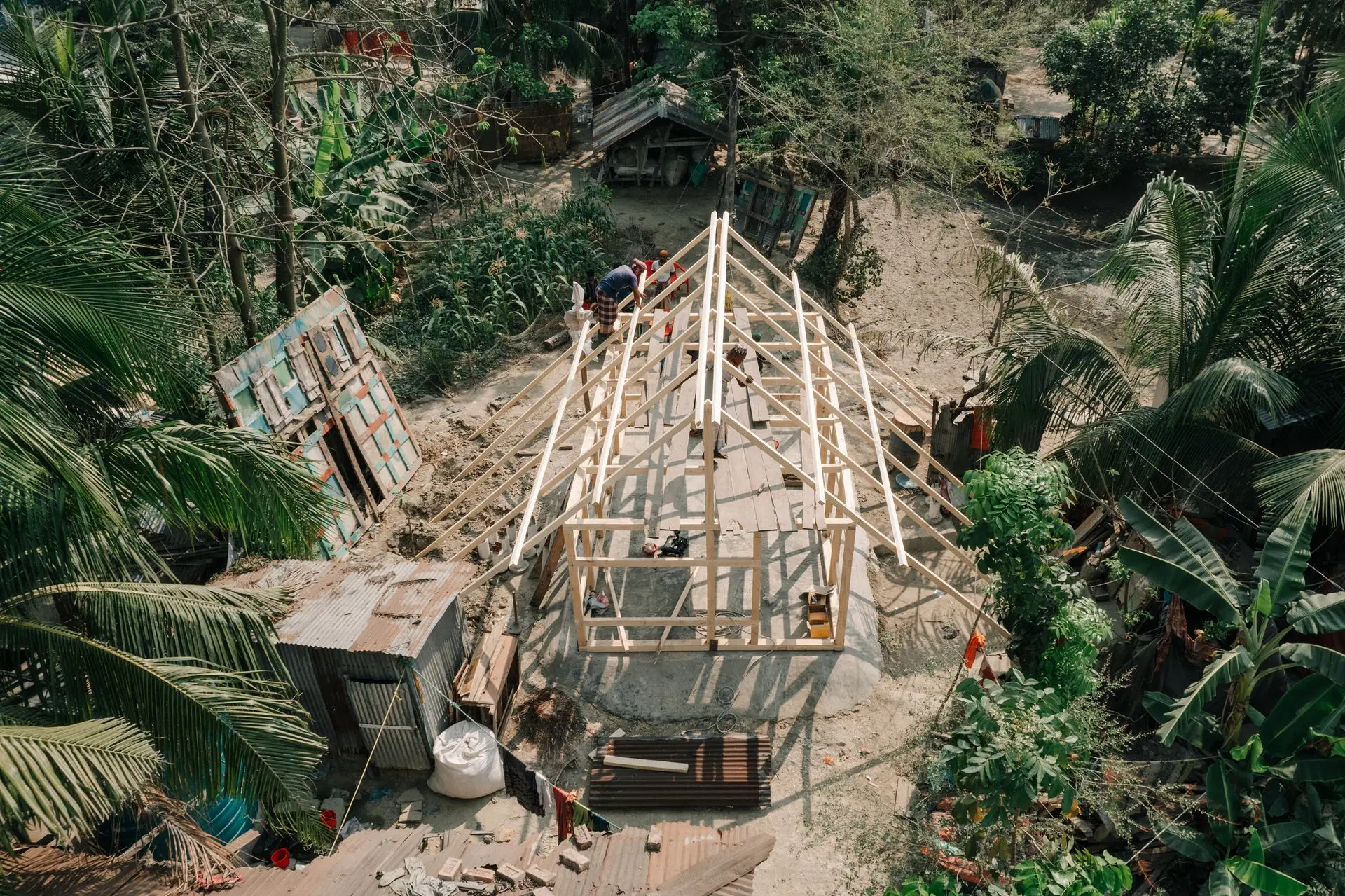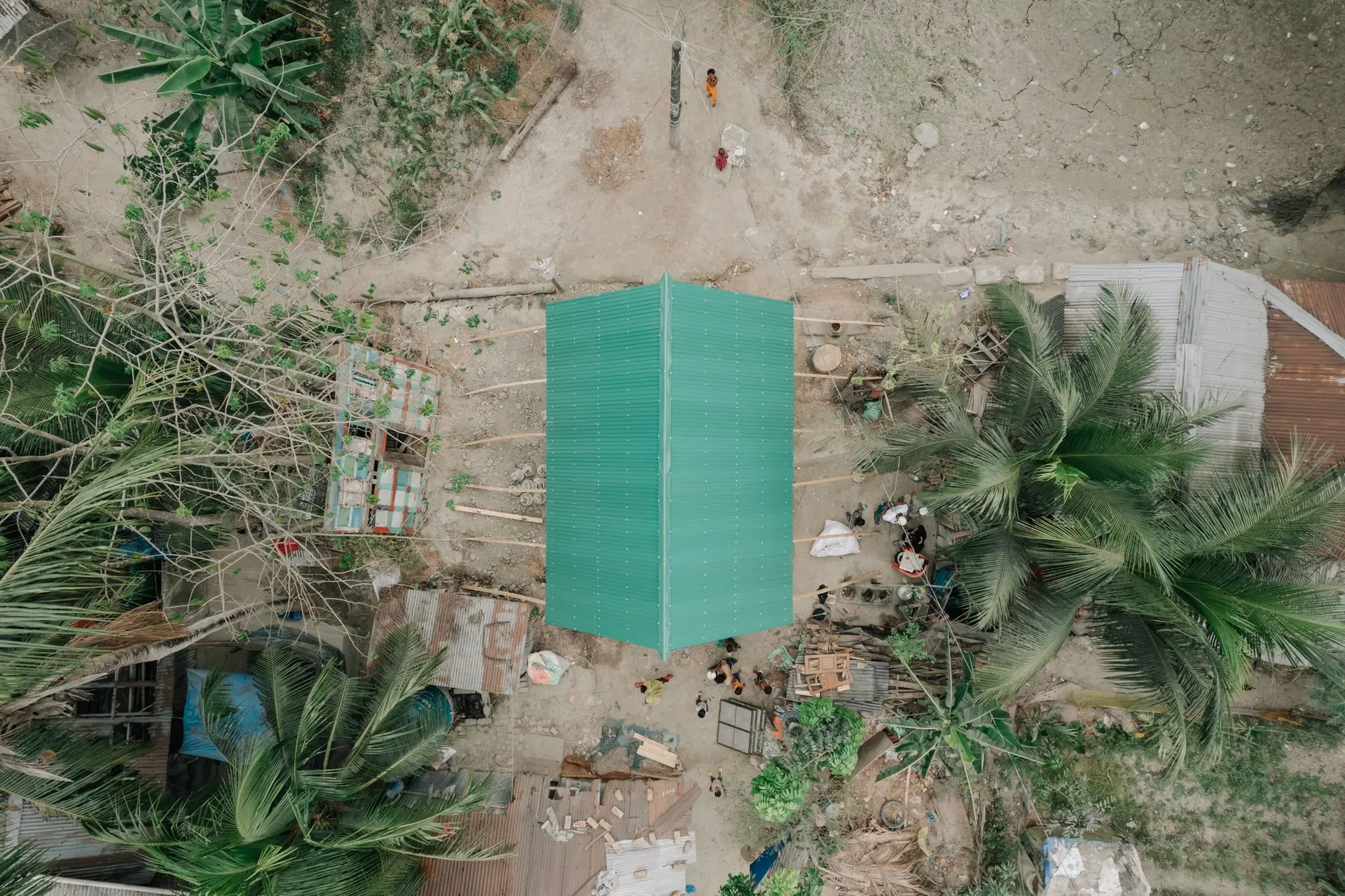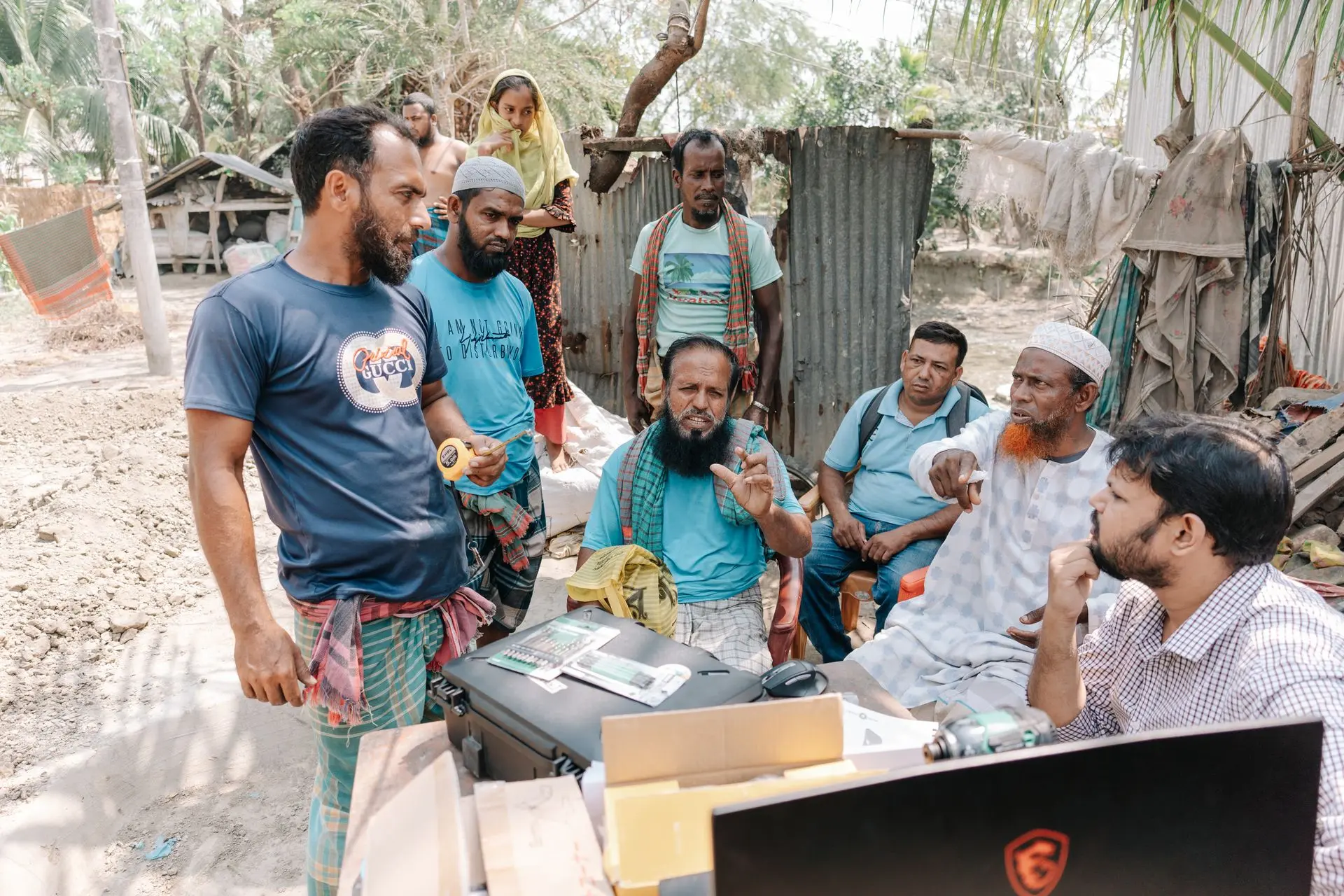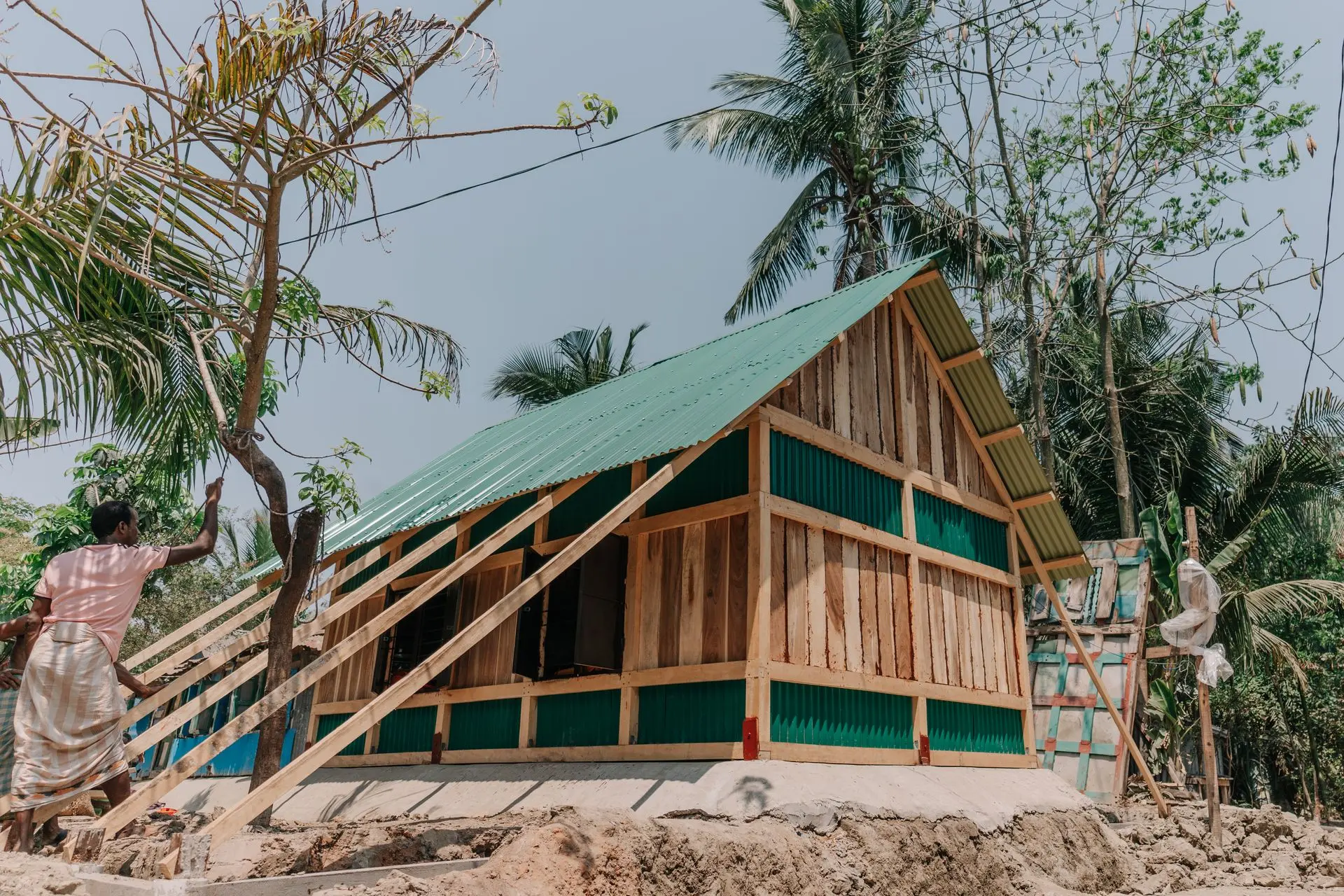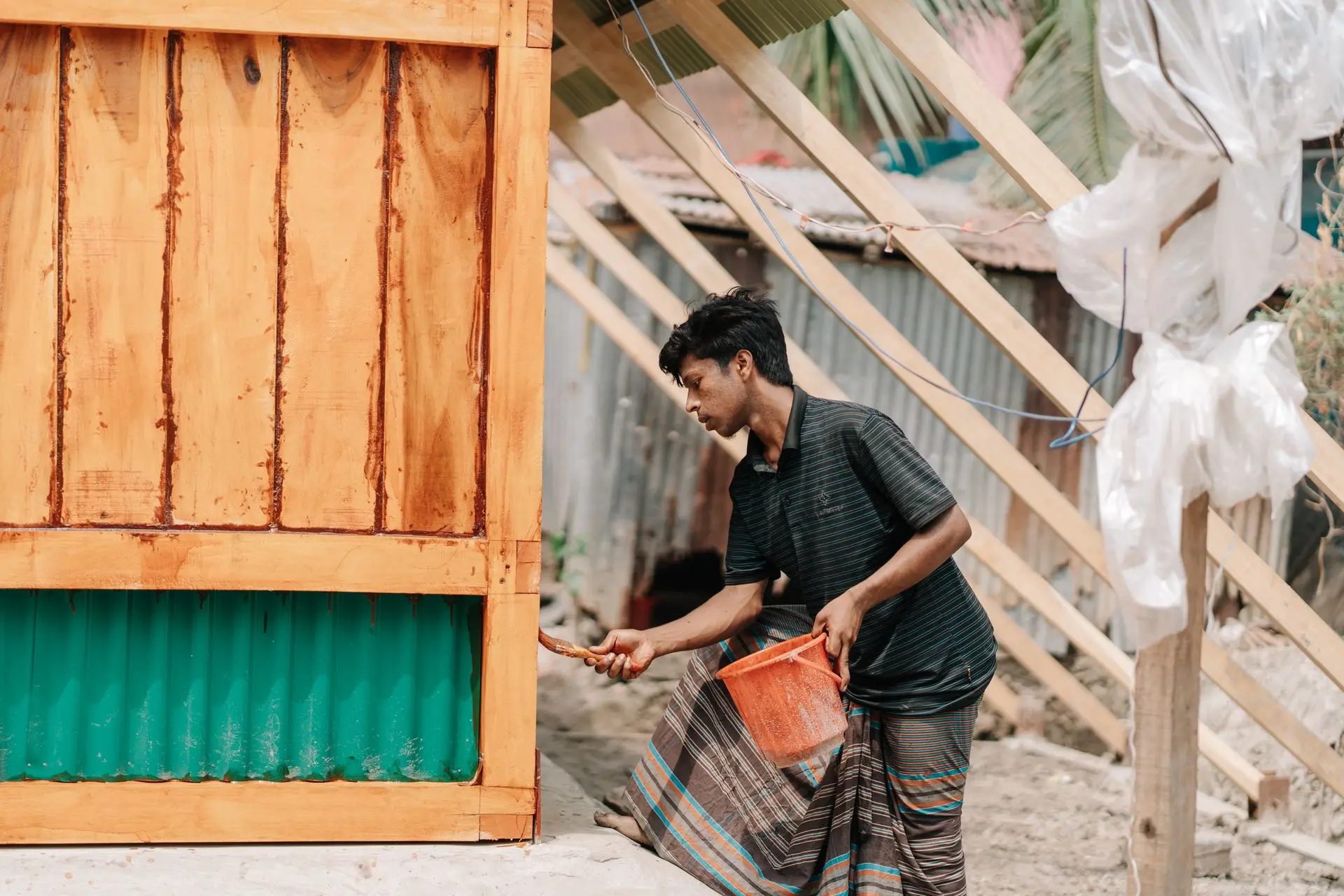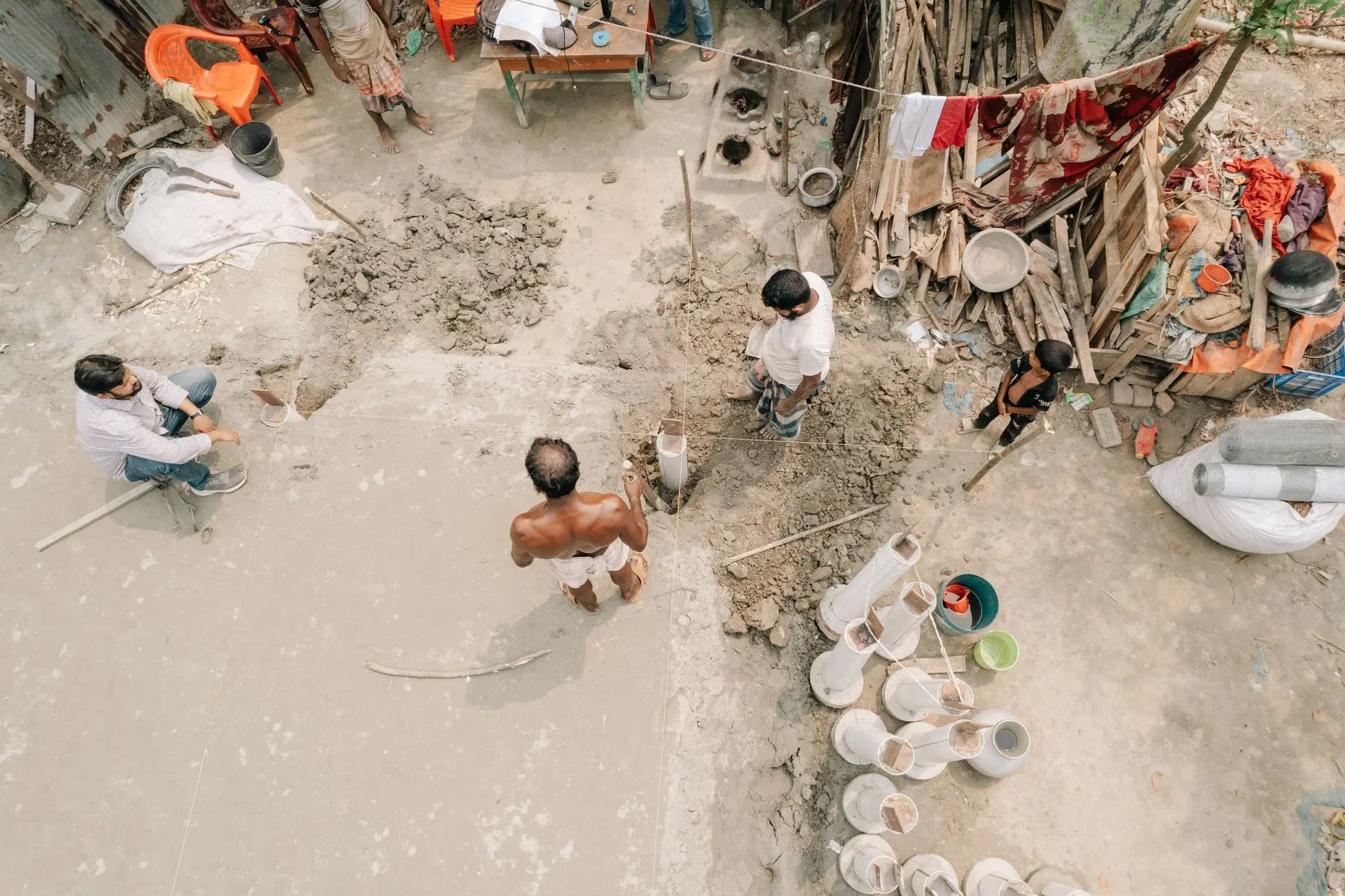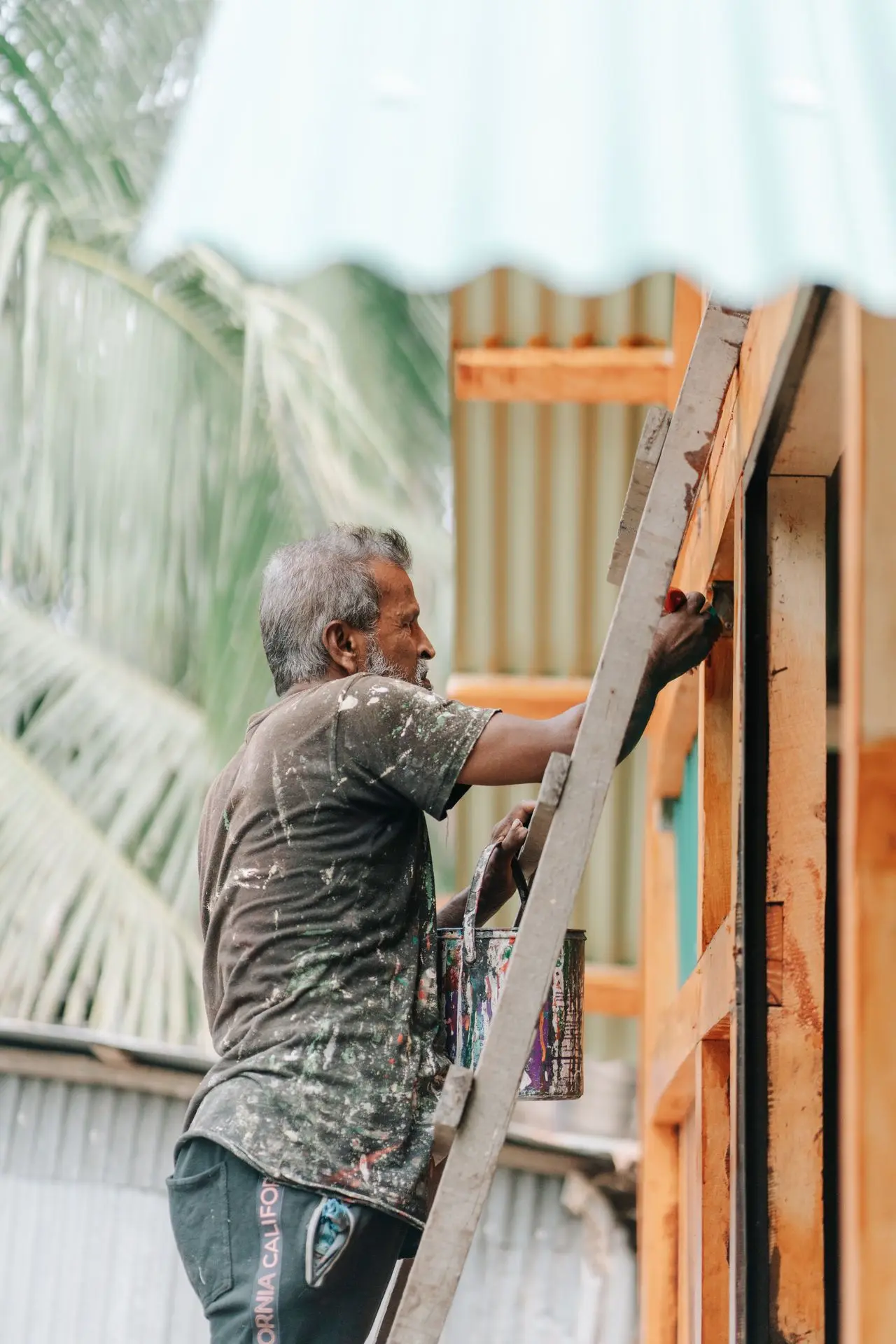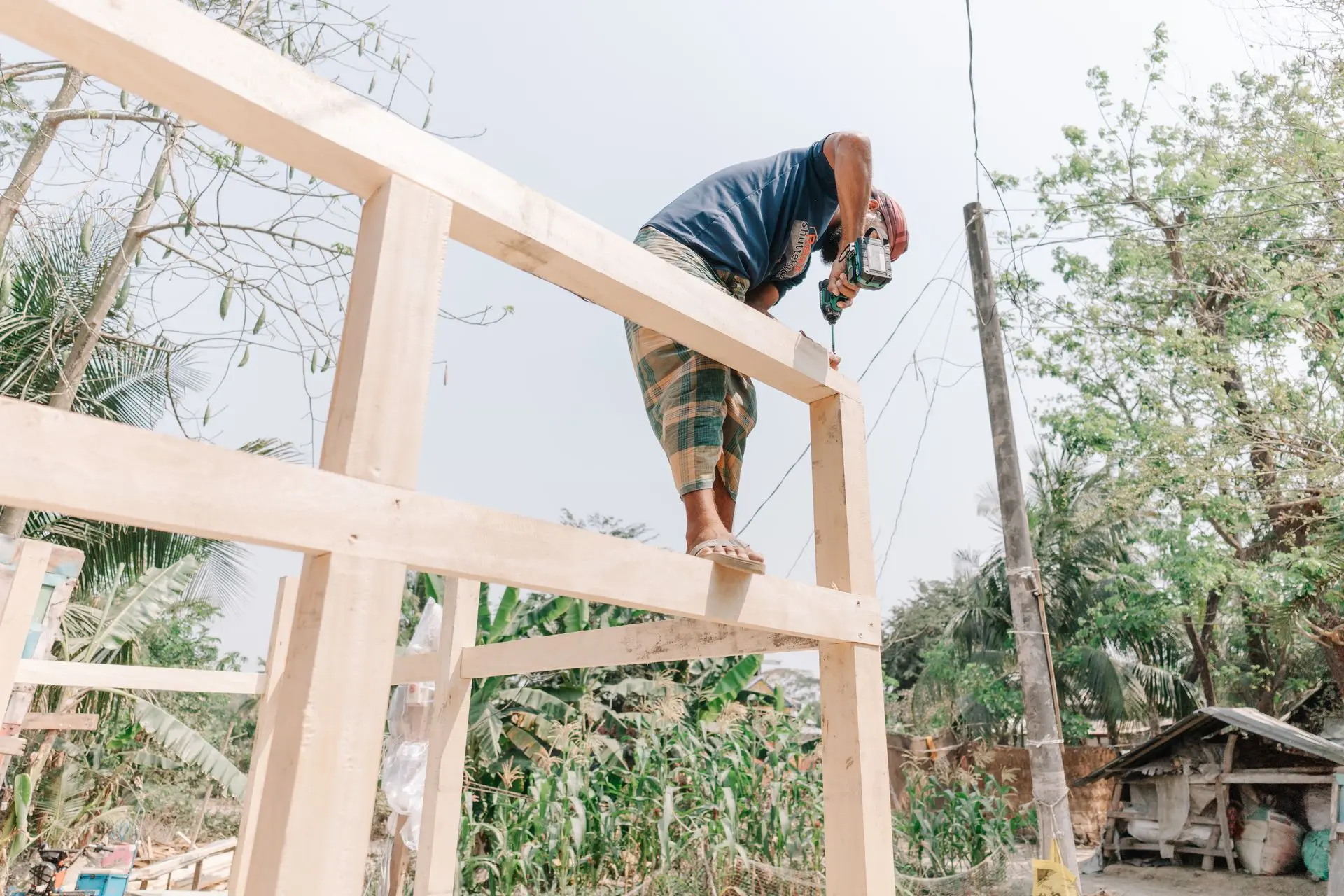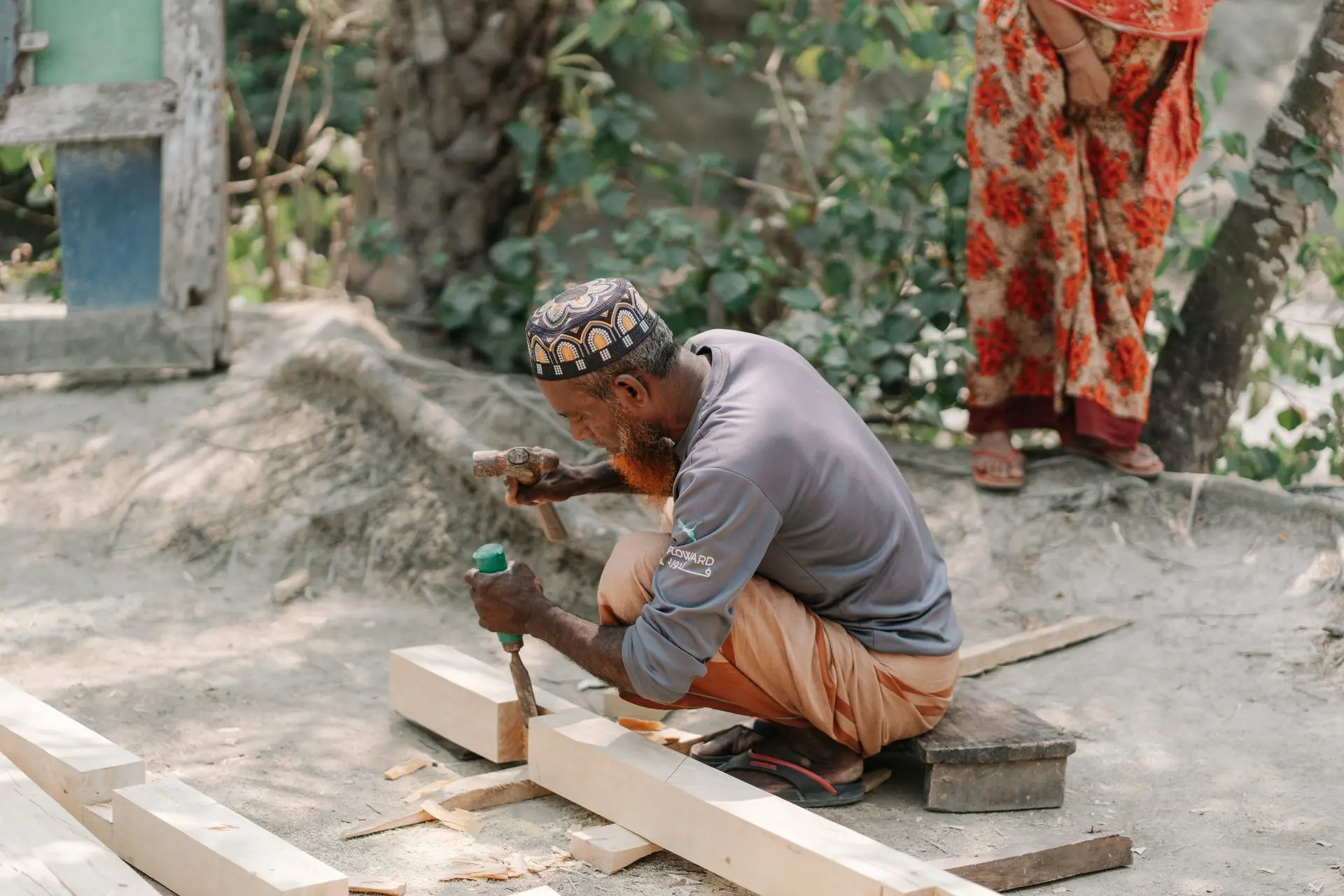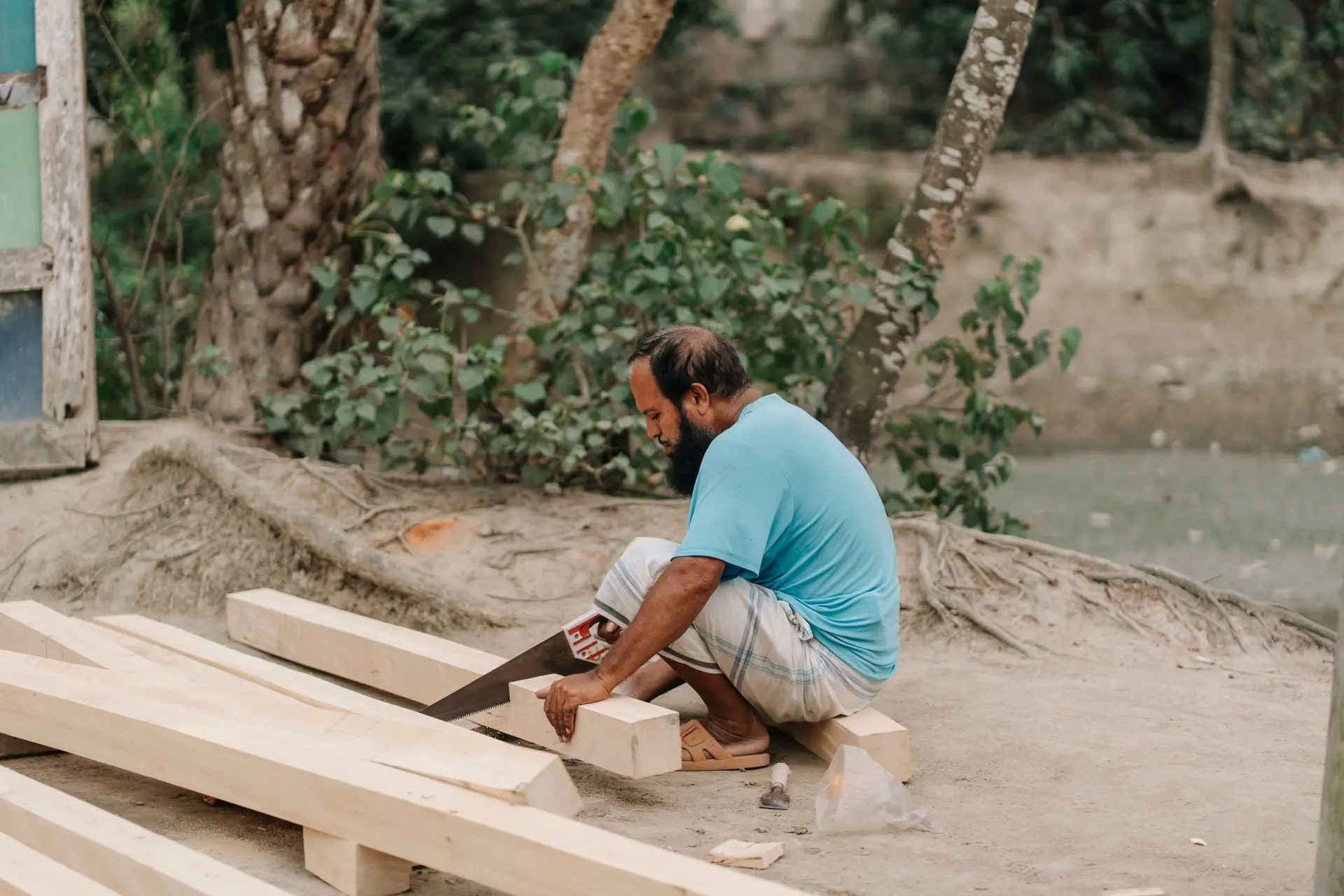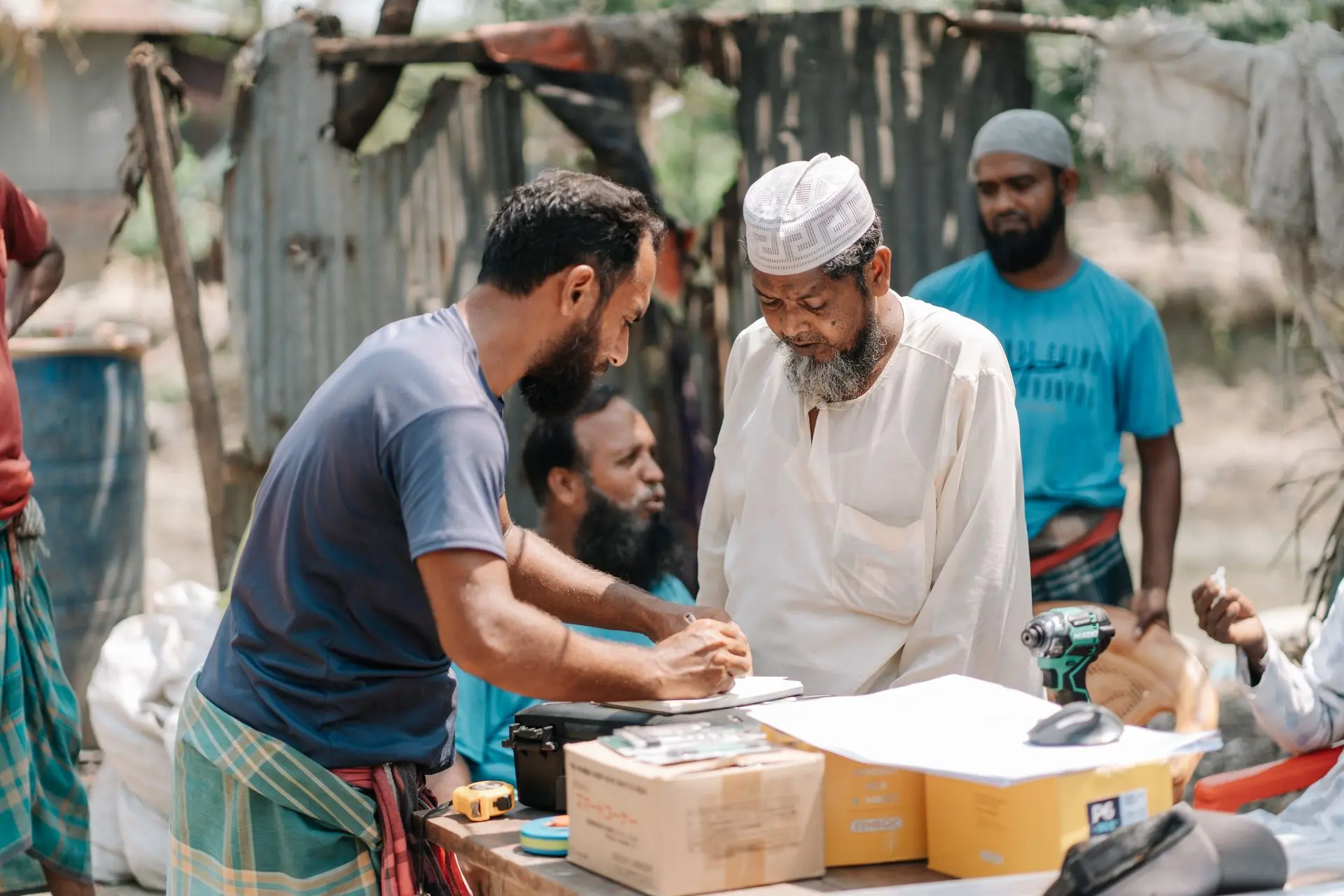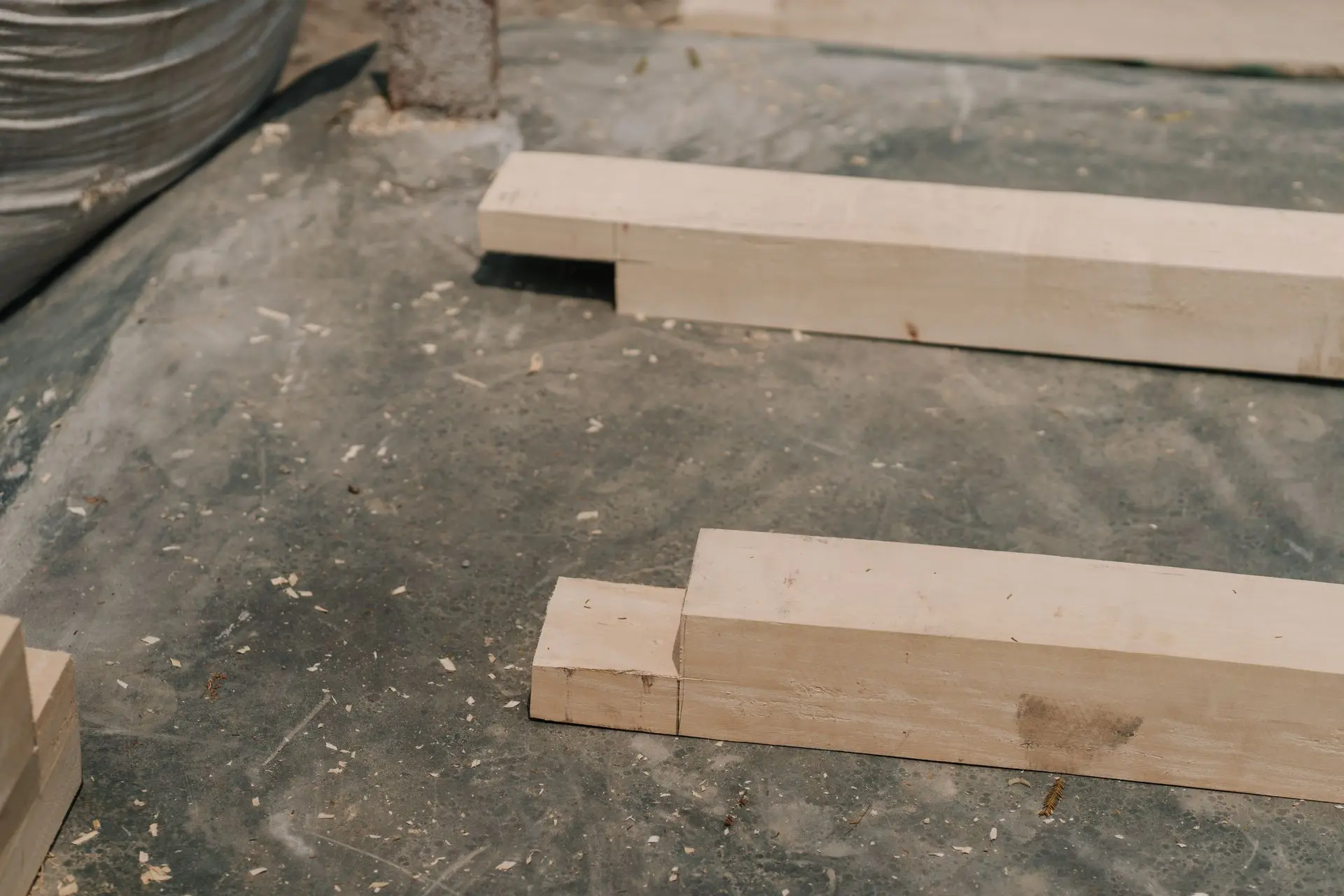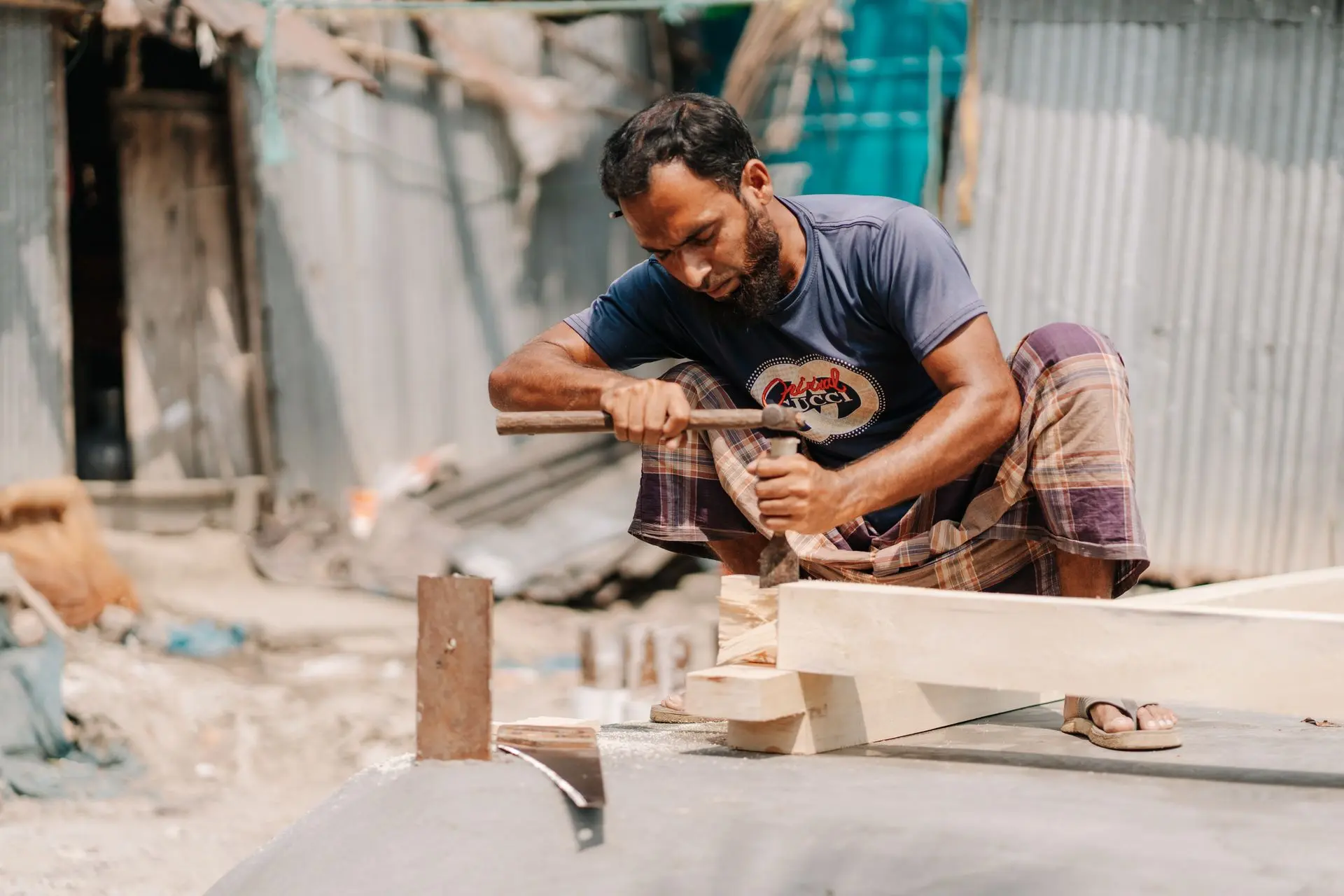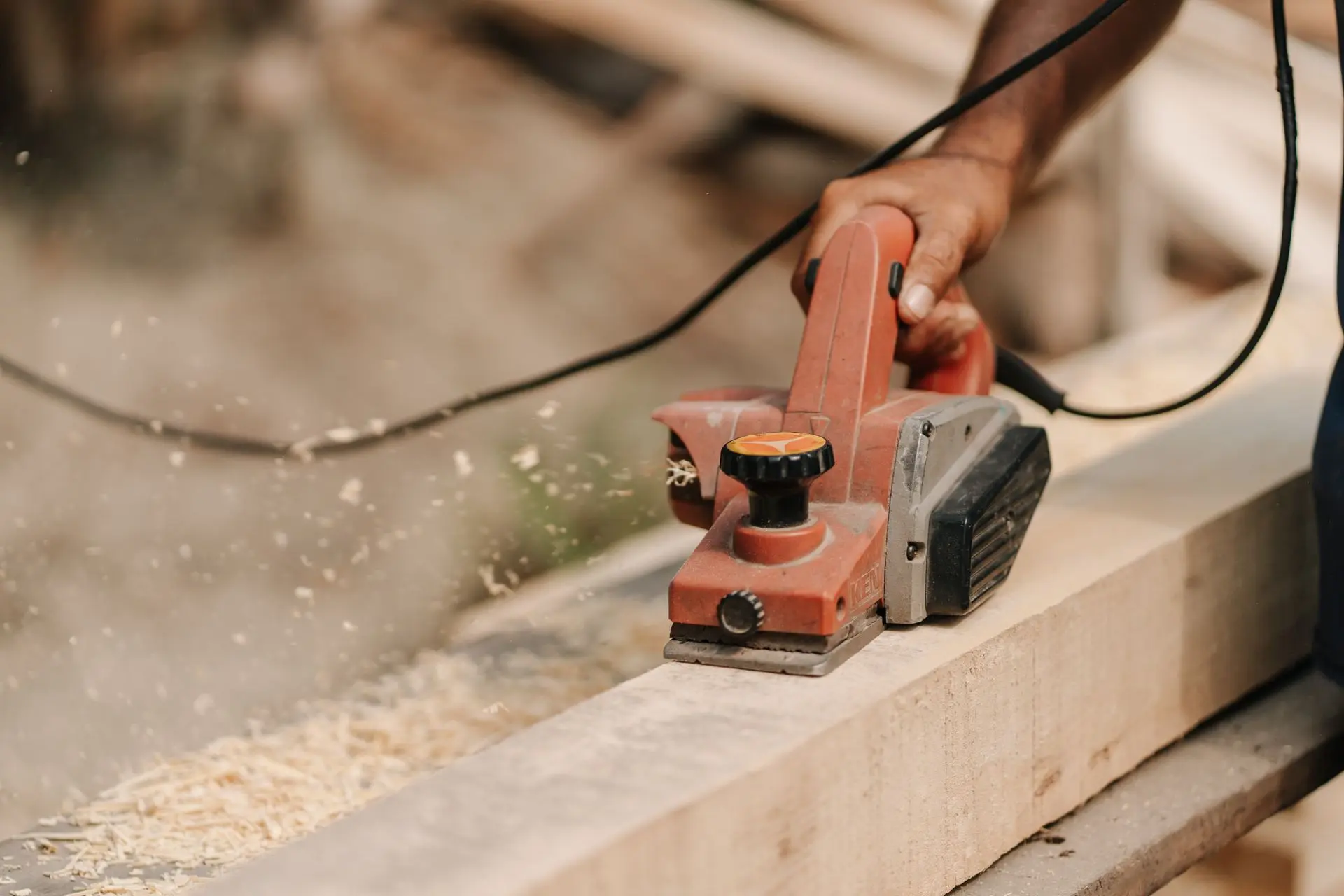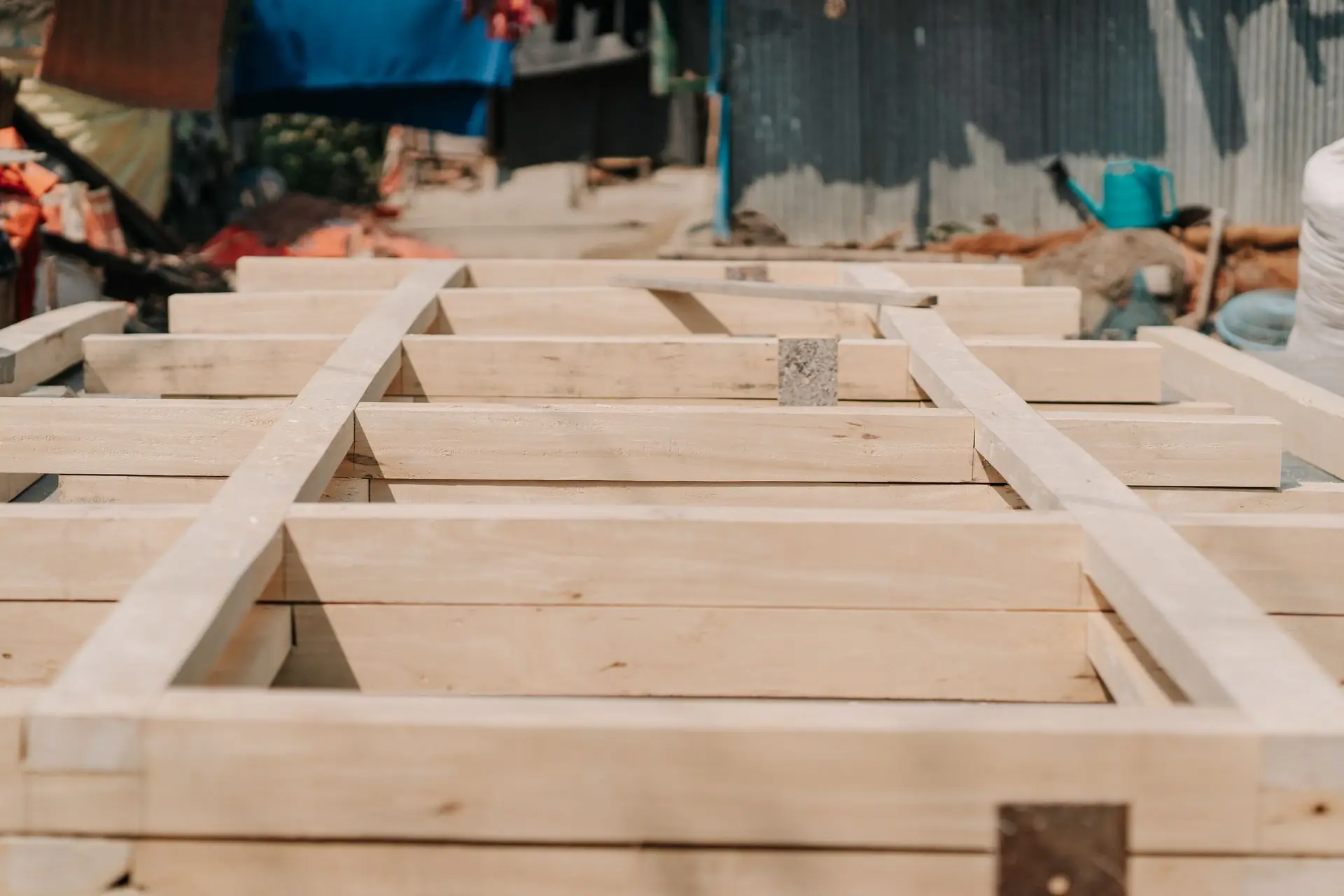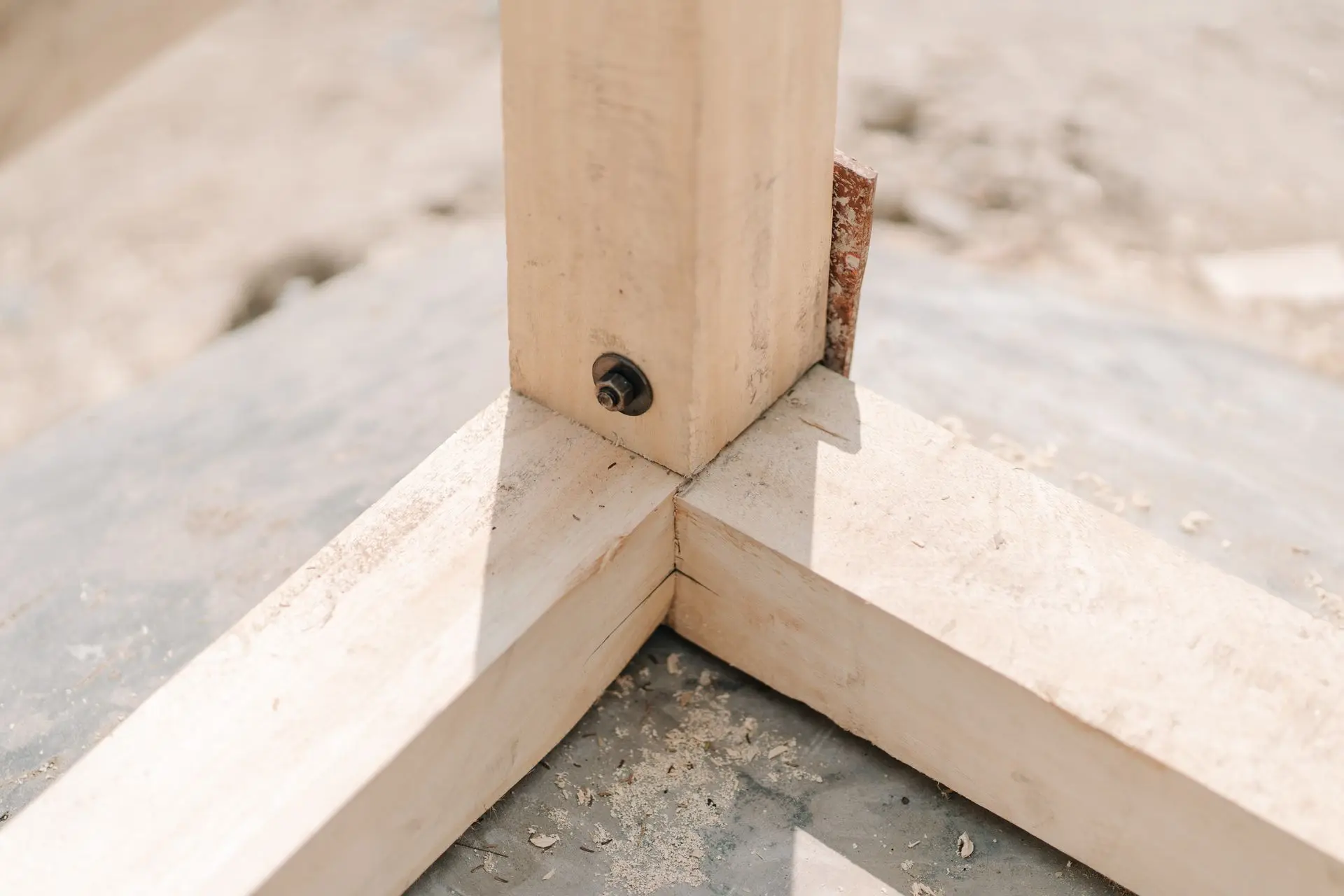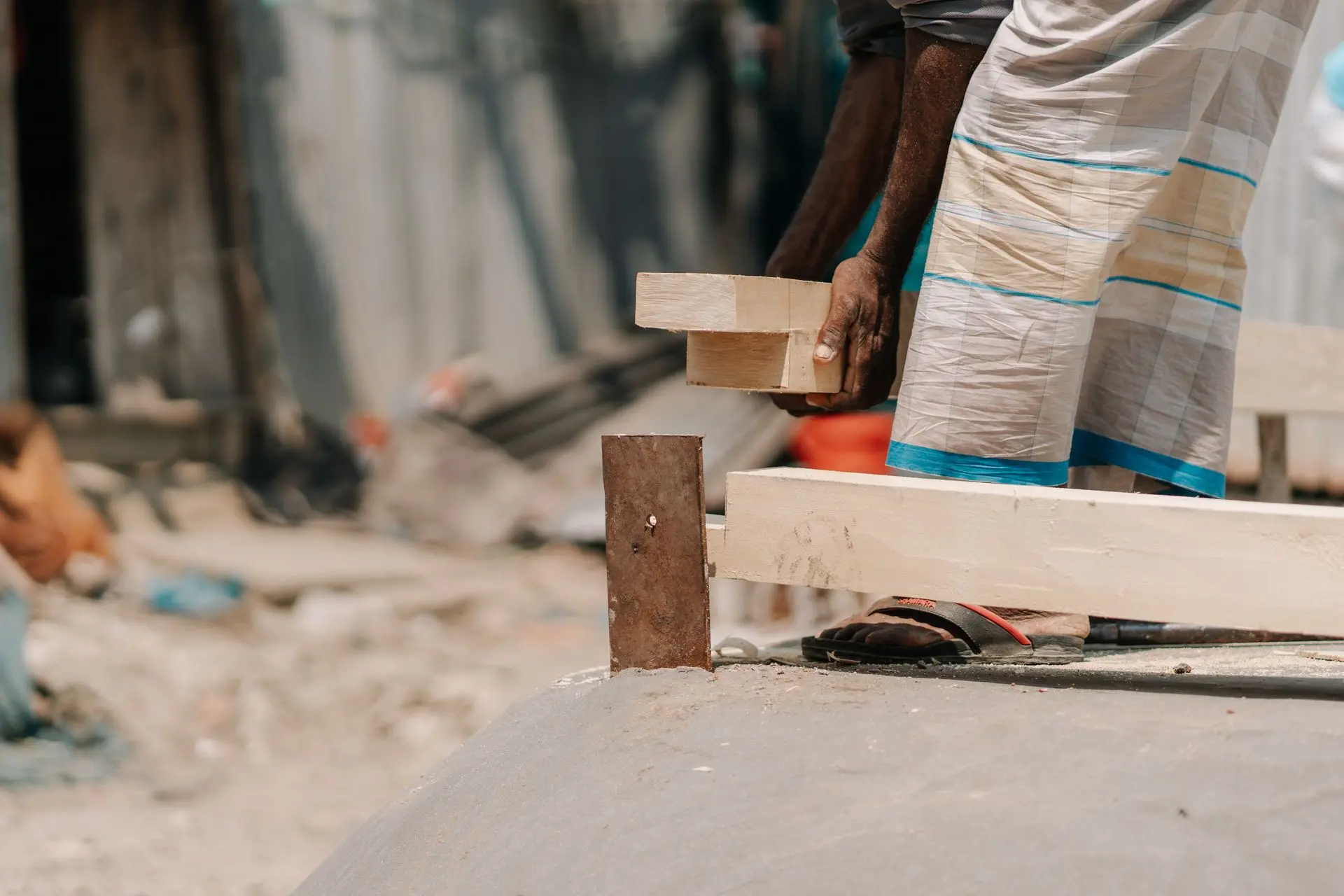Disaster Resilient Housing
In Bangladesh’s disaster-prone coastal belt communities face frequent cyclones, flooding, and salinity intrusion. To address these challenges, the Community Development Centre (CODEC), in collaboration with the JICA-IRMP project, has been developing affordable and disaster-resilient housing solutions.
In the village of Bipinpur, Kuakata, we partnered closely with local carpenters and builders to construct a prototype house that blends traditional materials with updated construction methods. Drawing from vernacular construction techniques known for their natural resilience, the project integrates local knowledge with modern engineering methods to improve structural safety. In Bipinpur, CODEC worked closely with local carpenters and builders to construct a prototype house that combines traditional materials—such as timber and corrugated galvanized iron (CGI) sheets—with enhanced building practices.
Although the materials are conventional and locally sourced, the construction approach has been upgraded for greater durability. The plinth was reinforced to resist salinity and minimize foundation damage, while also protecting against flooding and waterlogging. A solid base was built with pre-cast floor anchors to boost the home’s stability and cyclone resistance.
To strengthen joinery, steel screws replaced traditional iron nails, ensuring more reliable connections between wooden columns and beams. Steel bolts were also used to secure the structural frame to the foundation, increasing the building’s overall rigidity and resilience.
This initiative in Kuakata highlights how locally rooted knowledge, when combined with practical engineering improvements, can offer sustainable and cost-effective housing solutions tailored to the needs of vulnerable coastal communities.
